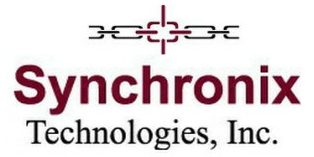The Supply Chain Management application of Theory of Constraints has no equal in any other improvement technology
The term Supply Chain Management is often misused, becoming a fancy designation for a Materials, Distribution or even Purchasing Management position.
For most “enlightened” managers, though, Supply Chain Management usually translates to less inventory, more velocity, and improved availability along some or all of the supply chain.
Now, Theory of Constraints certainly offers this same outcome.
At the plant level, just one link in the chain, Synchronous Manufacturing provides for the shortest in-plant lead times. I review this in the Synchronous Manufacturing application section.
And upstream and downstream the TOC Distribution solution provides a mechanism for a “pull” replenishment system that has advantages over the more common mechanisms. I review this in the Distribution Management section.
And on top of that we have the Buffer Management technique to support continuous improvement of processes along the supply chain.
But TOC also offers a dimension to the supply chain that has no equivalent in other bodies of knowledge, one that provides the potential for very aggressive growth.
To get there from here, you need to have some idea of the the concept of a Theory of Constraints “Mafia Offer” … I describe it in more detail in the Marketing Solution application but for now, just be aware that the TOC provides a powerful analytical tool to identify a company’s deep-rooted core problems and the negative effects of such a problem on the company’s performance.
The core problem is likely one that the company itself is entirely unaware of as a problem … it most likely considers it to be simply the “way things have to be in this industry.” Unavoidable, not worth thinking about.
If you’re able to package your offer – products, services, with all associated policies etc – in such a way that it relieves the core problem and some or all of the headaches, you have the basis for a Mafia Offer. The more headaches you solve, the more Unrefusable it is.
And if that core problem you relieve enables the downstream company to substantially increase its sales … then you’ve just substantially increased your sales, without adding another customer.
Now, think of the downstream supply chain in these terms. Go one step downstream … analyze to identify their core problem, using the TOC technique … is there some change you can make to your product and/or services that will relieve that company’s (or even better, that market’s) core problem and symptoms such that they will increase their sales?
Yes? Then start the Mafia Offer process.
No? Then look to the next step downstream, and ask the same question.
Now, simply increasing the velocity through the supply chain all by itself might have the potential to help the supply chain sell more product – for example, when everyone else waits 10 weeks for furniture, then if your supply chain can deliver in 3 or 4 weeks you have a terrific opportunity.
Similarly, improving the service level to downstream customers can do that, too.
But sometimes you can achieve both of these and an inventory reduction and you will definitely have some benefits … but not necessarily increased sales. It’s wrong to assume that increased velocity and improved availability automatically translates to increased sales.
The TOC approach therefore offers you a couple of things.
1. Tools to ensure that increased velocity and availability will actually lead to improved sales. These two performance improvements might be necessary … but might not, by themselves, be enough.
2. Tools to identify other improvements you can make to your offering that WILL lead to improved sales downstream. These might not even need improvements to the velocity and availability factors.
This way of thinking can provide opportunities for sales growth so large that they justify a company building its strategy around it. Which is another application you should check out – Strategic Planning.
Or, Return home: Fast, massive performance improvements
